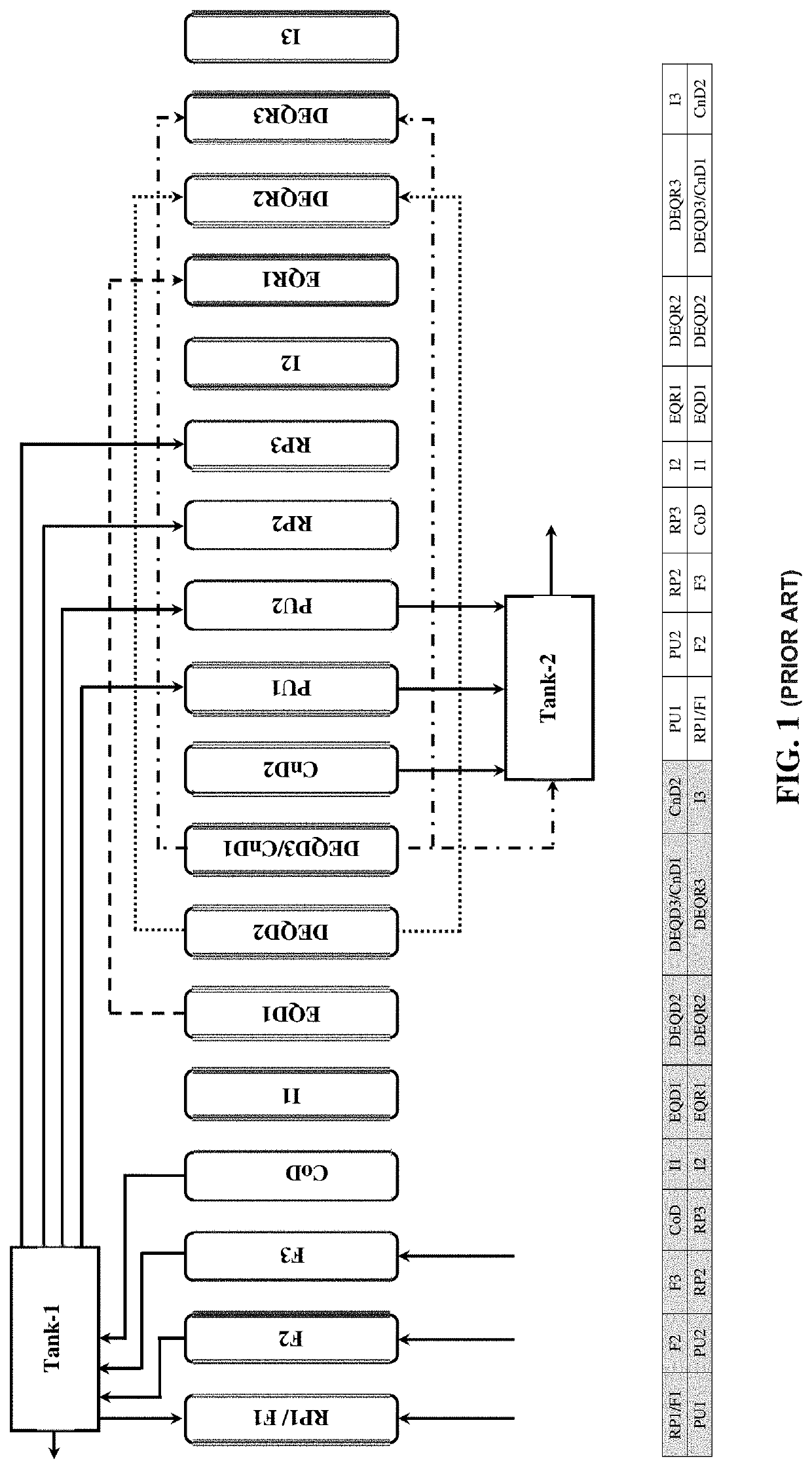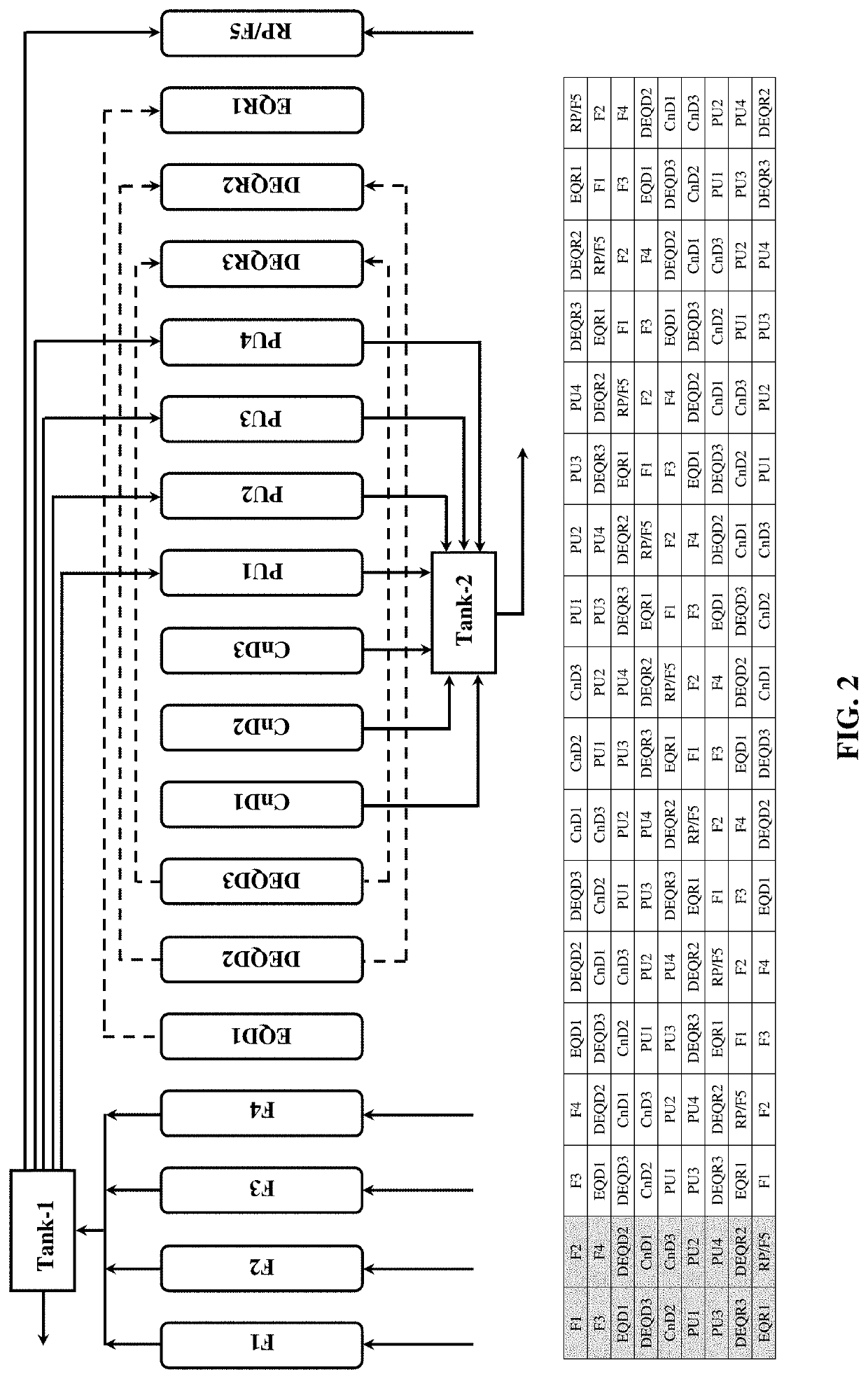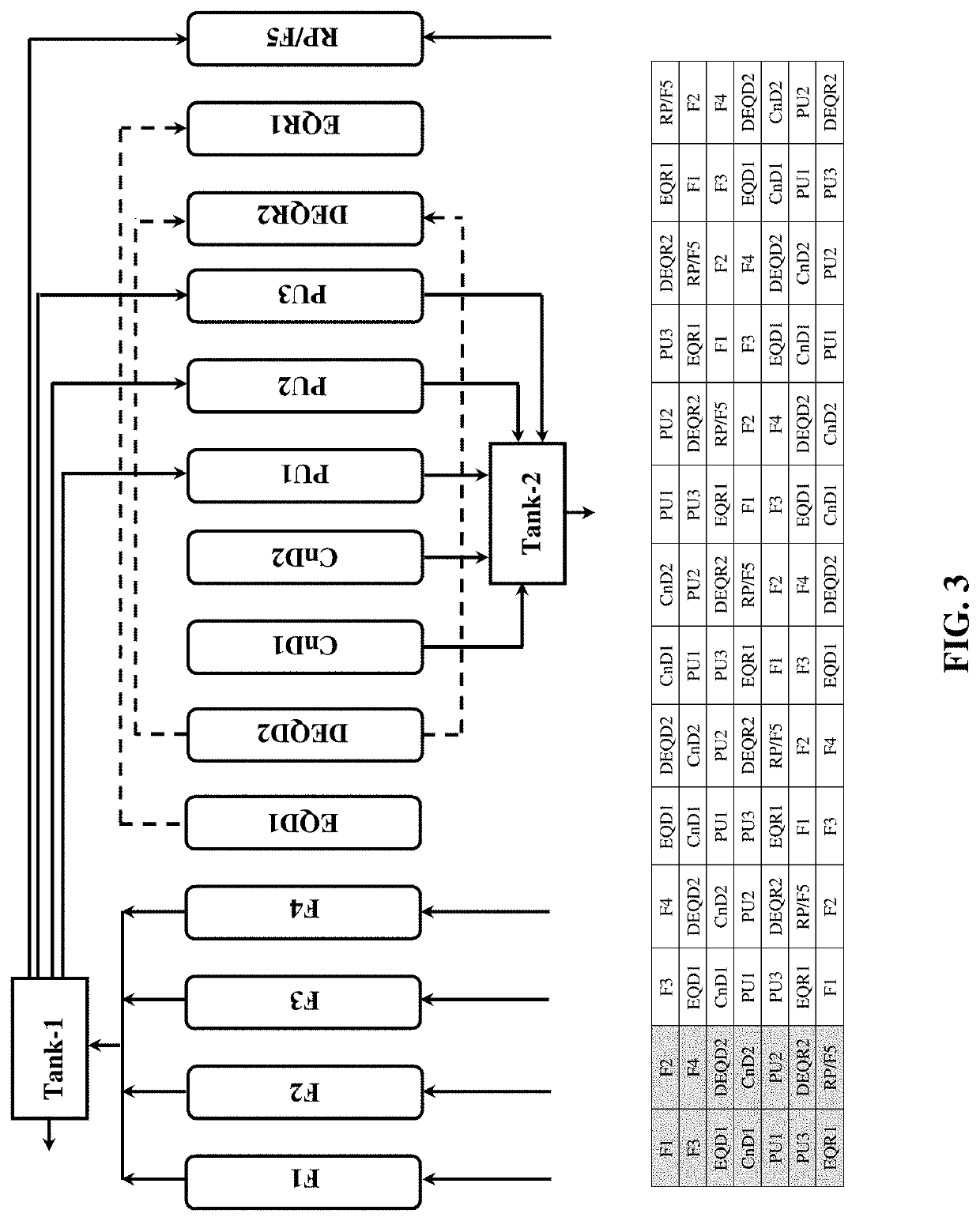Multi-bed rapid cycle kinetic PSA
a rapid cycle and kinetic technology, applied in the field of multi-bed rapid cycle pressure swing adsorption (psa), can solve the problems of increasing pressure drop, decreasing product recovery, and decreasing working capacity, and achieves small recovery effect, lowered specific productivity, and high specific productivity.
- Summary
- Abstract
- Description
- Claims
- Application Information
AI Technical Summary
Benefits of technology
Problems solved by technology
Method used
Image
Examples
examples
[0147]The 2-bed multi-step (shown in FIG. 1) and 9-bed multi-step (shown in FIG. 2) pressure swing adsorption (PSA) process cycles were used to evaluate process performance indicators in terms of feed to product ratio and specific productivity for separating nitrogen from air using several carbon molecular sieve (CMS) adsorbents. A summary of oxygen, nitrogen and argon adsorption rates as well as kinetic selectivity of oxygen over nitrogen for each of the CMS adsorbents is presented in Table 1. Note that the oxygen over nitrogen kinetic selectivity on 414-01 (“slow”) and 414-02 (“fast”) CMS adsorbents are same but the oxygen rate on 414-02 CMS adsorbent is 2× faster than the 414-01 CMS adsorbent. On the other hand, the oxygen rates on 414-02 and 414-03 (“fast”) CMS adsorbents are same but the kinetic selectivity (oxygen over nitrogen) on 414-02 CMS adsorbent is 2× higher than the one on the 414-03 adsorbent. The bed geometry, operating conditions and product oxygen concentration are...
PUM
| Property | Measurement | Unit |
|---|---|---|
| cycle time | aaaaa | aaaaa |
| temperature | aaaaa | aaaaa |
| temperature | aaaaa | aaaaa |
Abstract
Description
Claims
Application Information
 Login to View More
Login to View More - R&D
- Intellectual Property
- Life Sciences
- Materials
- Tech Scout
- Unparalleled Data Quality
- Higher Quality Content
- 60% Fewer Hallucinations
Browse by: Latest US Patents, China's latest patents, Technical Efficacy Thesaurus, Application Domain, Technology Topic, Popular Technical Reports.
© 2025 PatSnap. All rights reserved.Legal|Privacy policy|Modern Slavery Act Transparency Statement|Sitemap|About US| Contact US: help@patsnap.com



